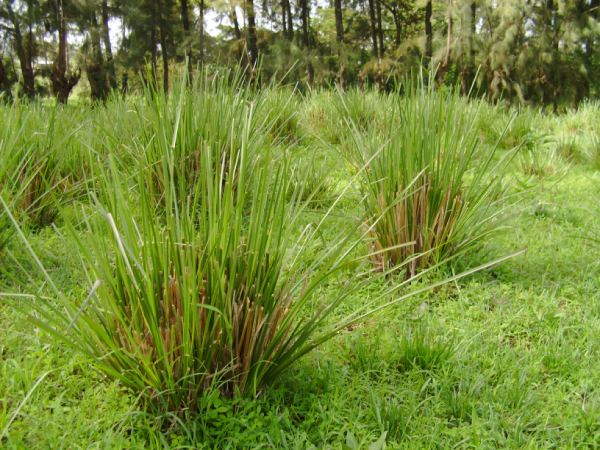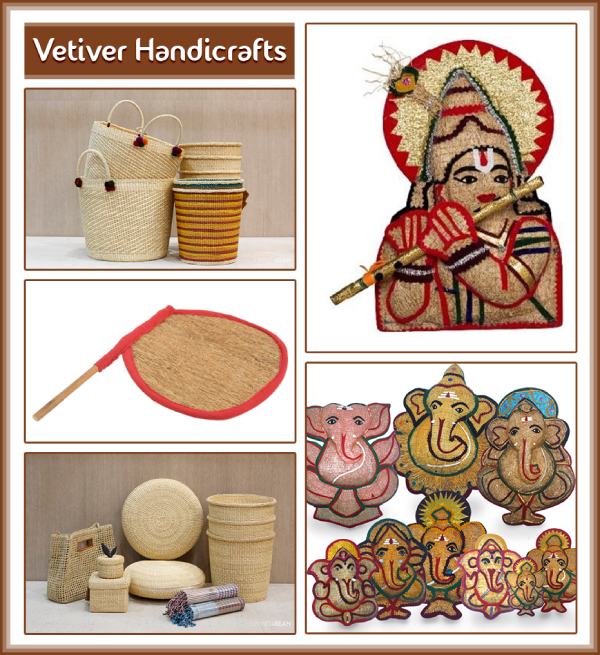Khus curtains were quite common in mediaeval India mainly in hot and dry areas, where these curtains were used for maintaining a cooling ambiance inside the rooms. People used to sprinkle water on it and when air blew through the curtain, people inside the room used to feel cool vibes all around. But with the easy availability of AC and cooler machines, these old traditional cooling remedies were not in regular practice, till the massive threat of global warming started looming large in horizon.
Now it’s a well-known fact that the use of AC and cooler is not that friendly for human body as well as for the global climate. It is rightly calculated by environmentalists that unless the emission of green gas and carbon footprint is restricted, survival on the planet Earth will be next to impossible. While the whole world is searching for green living options and remedy to reduce green gas omission, the random use of air conditioners and coolers is really now in question. Consequently, the use of Khus curtains are again surfacing up in Indian climate. But is khus a suitable green alternative to AC and coolers in home? Let’s discuss in details.
Besides expense and heavy use of electricity, there are some other adverse effects of AC on human health and also on the environment.

Let’s take the instance quoted by cosmetologist and skin specialist, ‘Dr. Rajan T D’, “AC takes away moisture from skin and scalp and makes it dry and stretched and constant dryness can harm the inner layers of skin and it can make you uncomfortable, it aggravates skin disorders.”
To reduce the usage of AC and electricity driven cooling systems at least in the residential structures, many natural passive cooling techniques are being discussed as a part of healthy green living. For example, Shaded opening with plants, use of buffer zones to reduce heat gains, restricted use of energy driven HVAC system etc. are some of the well accepted green ways to live and sustain. Fortunately some of these cooling techniques were quite popular in India in remote past: use of ‘Khus curtains’ to cool down the indoor areas without emitting heat outside was one of them. And as an alternative of AC and cooler use, it’s again coming in focus gradually.
What is Khus?
Khus is a perennial grass commonly known as vetiver in English. This perennial grass is of from the Poaceae family, which is abundantly found in some parts of India and lesser amount in other tropical regions of the world. It works as a natural coolant.

Vetiver Grass
Its scientific name is Chrysopogon zizanioides / Vetiveria zizanoides and also has some local names in India. Such as,
- Usirah, Usira, Vira (Sanskrit),
- Khas, Khus (Hindi);
- Valo (Gujarati);
- Khas-khas (Bengali);
- Ramacham (Malayalam);
- Illamichamber (Tamil);
- Vattiveru (Telugu);
- Panni (Punjabi);
- Vala (Marathi);
- Khas (Urdu)
It grows up to 3m in height under suitable climactic conditions as clumps with an average height of 1.5m. Its roots don’t spread wide unlike other grass and grow downwards up to 2m to 4m. It is a tall, tufted and scanted type of grass with straight stem.
Use of Khus or Vetiver Plant
01. Grazing
- The vetiver doesn’t contain a considerable amount of toxicity and hence is useful for grazing year around especially in droughts.
02. Landscaping and Plot Boundaries

Landscaping with Khus Grass
- Vetiver has a significant aesthetic value in landscaping for gardens, patios, and backyard because the green cover of the large vetiver bushes tends to conceal the unattractive parts.
- Vetiver hedges are popularly used for beautification, for prevention of soil erosion, and also for setting demarcation of boundaries for plots, fields as well as for creating internal boundaries in gardens, etc.
03. As Decorative Potted Plants, Handicrafts, and Weaving

Vetiver Handicrafts
- Fibrous leaves/grasses are seen as an ideal material for wickerwork, Vetiver is no exception to this practice. Used directly as well as in braided or interlaced fashion, Vetiver based handicraft items like containers, home appliances, etc. have their demand in Thai traditional production practices.
04. As Insecticide and Pesticides
- A report from Louisiana State University (Maistrello and Henderson 1999) states “one of the components of vetiver oil is its germicide power and it is used for controlling the manifestation of Formosan termite.” Based on these studies, it seems possible, to create natural substitutes of harmful pesticides by using this vetiver grass. Perhaps this was one of the reasons farmers themselves were used to plant and harvest these grasses in the crop area and in residential property in the past where use of pesticides were not that in common prcatice.
05. Medicinal Use
- A part of traditional Thai medicine, Vetiver has been used to cure fevers and diseases related to gall bladder/stomach.
- The herb is identified with Anti-inflammatory, antiseptic, aphrodisiac, sedative, tonic and vulnerary medicinal properties.
06. Fragrances and as a Flavoring Agent in Food
- Vetiver is used for aromatherapy, as well as it is used as a flavor for preparing homemade soft drinks in India.
07. Construction-Related Activities
- From thatch roof and prefabricated sustainable alternative construction techniques (Vetiver-clay blocks) to veneering, the grass exhibits its potential in rural areas, as low cost and more environment-friendly construction alternatives than asbestos and tiles.
08. Windbreakers and Heat and Dust Reduction
- Vetiver hedges act as barriers for wind and dust, effective fencing against erosion and dust penetration.
Vetiver Curtain or Khus Curtain

Vetiver Curtains
As seen above, there are many advantages of using khus. Due to the therapeutic benefits of khus in heat reduction, wind-breaking and in emancipating aromatic smell, it is a healthy option for making curtains as well as for making blinds and shades.
As said before, in earlier days in India, the Khus roots have been used for making curtains, khus screen, baskets, floor mats, and beautiful blinds…it seems Indians were already aware of the herbal heat alternative remedy by khus.
The khus curtains are made with fresh vetiver grass roots. These grasses are known for their amazing water retention capacity for storing adequate water in its body to stay moist for long. When these products are placed on the windows and doors and water is sprinkled over them, it provides cool and aromatic fresh air to the indoors as the water present in these curtains absorb the heat from the surroundings in the form of latent form of energy evaporates.
Advantage of Using Khus Curtains in the Home
A khus curtain can help in many ways. Some of the premium advantages of a khus curtain is
- Cools down the indoor environment of the home.
- Prevents dust particles’ entry in spite of an open window and flow of cool air.
- Acts as a great sound barrier and hence reduces the noise of vehicles outside.
- Spreads the fresh fragrance of Khus in the home.
- Acts as an insecticide and prevent mosquitoes and flies from entering the space.
- A khas curtain is economically and environmentally sustainable and it hardly requires any rigorous maintenance.
- It can be hanged outside of the window so even the glass is not heated when closed.
- It’s really good as an architectural element for the residential facades.
- These curtains can also be used on car rooftops to provide a cooling effect inside the car compartment.
- In many parts of India, poultry farmers use the khus tatties to keep it cool as it is reasonably priced and easier to maintain.
Cooling Due to Khus Curtains Work on Two Simple Principles: How it Works?
- To get cooling benefits from the khas curtains, you have to sprinkle water on it twice or thrice a day. The curtain will extract heat from the atmosphere in the form of latent heat of evaporation, hence there will be lesser heat in the indoor environment. Hence the interior temperature gets lower than the outside.
- There is another way to increase this effect. You can place an exhaust fan in a closed room with a single opening covered with a wet khus curtain: the fast blow of exhaust fan will increase the speed of air supply in room.
In a final note, Khus curtains are the sustainable solution for cooling the indoor without harming the environment and your body, and without the use of costly energy resources. It is easy to get Khush curtains installed because it’s easily available in the market at a cheaper cost, and it is easier to drench them in water. You need to place a small water pipe connected to water source from which water will be dripping on the curtain. Khus shades are also available with variable density and permeability.
This khus curtains are green alternative of air conditioner machines and coolers and can be used by almost everybody due to the lower price and lower maintenance. You can try it and let us know how efficient the khus solution is in contrast to an AC or a cooler machine.
Also Read:
How to Plan Garden of your Homes for All Season?
Everything You Need to Know About Pot or Container Gardening
How to Start a Kitchen Garden?
Image Courtesy: Image 1, Image 2, Image 3, Image 4a, Image 4b, Image 4c,Image 4d, Image 5




